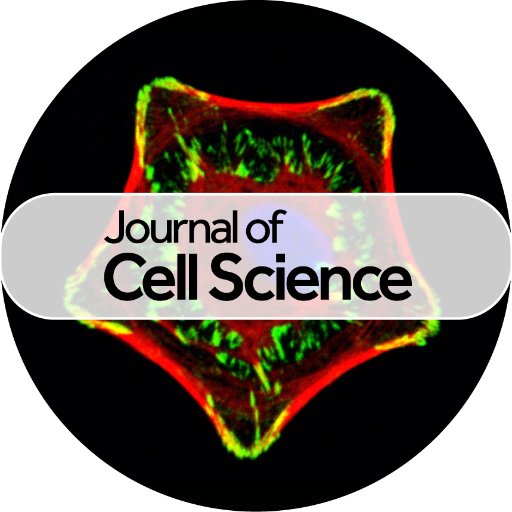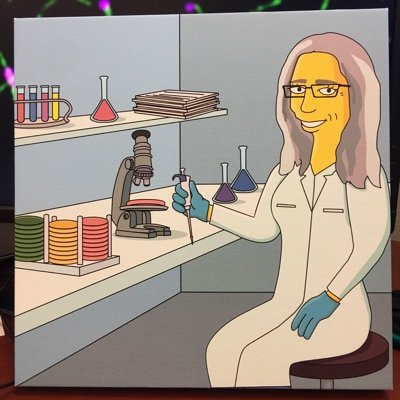
The Rog Lab
@TheRogLab
Followers
757
Following
2K
Media
171
Statuses
911
Chromosomes in Action
Salt Lake City, UT
Joined August 2016
The last of my graduate work with @DianaLibuda is out in @eLife! We show that BRCA1 and SMC-5/6 regulate DNA break repair pathway engagement in C. elegans meiosis, but are not required for intersister repair. A fun "crossover" collab with @TheRogLab!
elifesciences.org
To maintain genomic integrity during oocyte development, the tumor suppressor BRCA1/BRC-1 and the SMC-5/6 complex both repress intersister crossover recombination events while BRCA1/BRC-1 also...
1
6
22
In their Review, Iván Olaya, @smburgessucd @BurgessLab and Ofer Rog @TheRogLab discuss the formation and resolution of meiotic chromosome entanglements and interlocks. https://t.co/vxRtBJpJ0b
0
1
8
We are pleased to report the publication of our review on the formation and resolution of meiotic chromosome entanglements and interlocks. It was a pleasure to work with Ofer Rog @TheRogLab and Iván Olaya @meiocyte_Ivan on this project. https://t.co/WFqHOyLzCo
journals.biologists.com
Summary: During meiosis, chromosomes can become entangled or entrapped and subsequently form interlocks. Here, we review observations of interlocks and provide insights into mechanisms that resolve...
0
4
9
TOMORROW, 1pm EDT📣 Ofer Rog of @UoUBiology will cover 2 unpublished stories from his lab on unexpected de-mixing of sister chromatids during meiotic prophase & a 🆕 genomic technique to characterize large-scale chromatin organization. Register: https://t.co/f4Cp1Vdtfc
@TheRogLab
0
4
10
🗓️ July 11, 1pm EDT: https://t.co/f4Cp1Vdtfc Ofer Rog of @UoUBiology will cover 2 unpublished stories from his lab on the unexpected de-mixing of sister chromatids during meiotic prophase & a 🆕 genomic technique to characterize large-scale chromatin organization. @TheRogLab
0
4
9
We’d love to get feedback and suggestions. Kudos to Kewei, an amazing grad student who developed CheC-PLS over the last 5 years; to Chloe and @lexy_von_diez (now with her own lab, new-car-smell and all, at UMinnesota); and to @LisaKursel and a super-talented undergrad, Kaan.
2
0
3
So Skp1 has been moonlighting for >100 million years. Which adds a new twist to the SC paradox: how does a highly conserved protein (Skp1) maintains intimate interaction with quickly diverging proteins in a way that does not leave a clear evolutionary mark in their sequence?
1
0
1
In both nematode, Skp1 is not only necessary for assembly of the SC onto chromosomes - without dimerization-competent Skp1, SC proteins are absent.
1
0
1
Lisa turned to the distantly related nematode P. pacificus, and found that the answer is a resounding ‘yes’. Ppa-SKR-1 localize to the middle of the SC, and a conserved dimerization interface in Skp1 is specifically required for SC assembly in Pristi, as it is in elegans.
1
1
2
Recently, @WormMeiosis made an intriguing discovery: Skp1, a conserved subunit of the SCF ubiquitin ligase complex (SKR-1 in C. elegans), moonlights as a structural component of the SC. @LisaKursel decided to test whether this function is conserved.
science.org
Skp1 proteins moonlight as structural components of the synaptonemal complex in C. elegans.
1
1
1
On the other hand, the protein sequence is incredibly divergent between and within clades, so much so that the genes had to be independently cloned in different model organisms. (More on that in Lisa’s previous paper.)
elifesciences.org
The protein components of an essential and conserved meiotic interface, the synaptonemal complex, have highly conserved coil-coiled domains and protein length, despite highly diverged sequence.
1
1
1
#3: Skp1 in the SC. SC proteins have intriguing evolutionary history: they build a highly conserved structure AND (almost) all subunits are co-dependent for assembly.
1
0
1
That has crucial implications: ZHP-3 can sample the entire 6um chromosome in tens of minutes, whereas SYP-3 cannot. By extension, ZHP-3 is capable of efficiently transducing a crossover signal, whereas SYP-3 would be unlikely to.
1
0
1
The second important finding came from comparing the diffusion of an SC component (SYP-3) vs a regulator of crossovers (ZHP-3). ZHP-3 diffuses 4-9 times faster than SYP-3 (depending on meiotic stage).
1
3
6
(Black-boxing some amazing tech here; check out the preprint for details.) This finding confirmed a crucial aspect of the coarsening hypothesis.
1
0
2
However, a crucial piece of this model has not been tested: do molecules diffuse within the SC? @lexy_von_diez directly tested that. By sparsely labeling SC components and crossover regulators, she was able to observe single molecules in live gonads.
1
2
4
This idea, and beautiful data from worms and plants (cc @Raph_Mercier @ChrisMorgan555 ) suggested coarsening regulates genetic exchanges (crossovers).
1
0
2
#2: Diffusion within the synaptonemal complex (SC). A few years ago Abby Dernburg and I showed the SC has liquid properties.
elifesciences.org
Formation of a phase-separated interface between homologous chromosomes during meiosis enables regulatory signals to spread in cis over long distances, illuminating the longstanding mystery of...
1
1
2
And perhaps not less important - potential for many future experiments. Should be noted: nothing in the design confines CheC-PLS to budding yeast, so it should be adaptable to other model organisms.
1
1
1
Our data revealed sliding of cohesin on DNA (presumably loop extrusion); positioning of nucleosomes; and, AFAIK, the first binding patterns of cohesins in the rDNA locus. Much more data inside.
1
0
2





